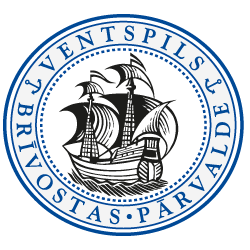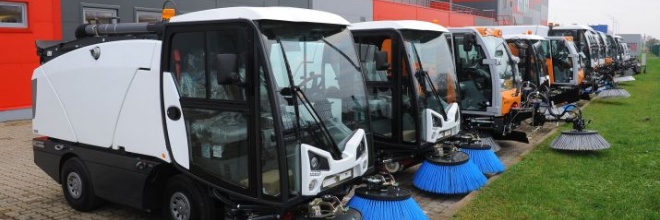From Switzerland and England to Ventspils
Before opened the production line, other important steps were taken in the development of the production facility. New lines were also opened in September 2016 and May 2017, according to the head of Assembly and Painting Departments Dace Graudiņa and production engineer Artis Segliņš.
The new line is provided for assembling a compact class street sweeping machine C201 with the capacity of 2m³. Another model of municipality machine with the capacity of 2m³ is also produced at the production facility in Ventspils. The production of this machine was moved to Ventspils from Switzerland last year. As the functions and operating principle of both models are different, it was not possible to combine the new model in the existing line. The new production line was moved from the enterprise of Bucher Industries in England. «We moved three production lines from Switzerland and two production lines from England,» Graudiņa said and added that the changes were implemented due to the project Spirit started by the group in February 2016 that will last until the end of 2017. It should be reminded that previously only some parts of municipal machines were produced in Ventspils, but starting November 2015, full production cycle is ensured.
One of the heads of Bucher Municipal Thomas Emmenegger has said before that the main reason why assembly lines were moved to Ventspils is related to financing, as the assembly of municipal machines in Ventspils is cheaper than in England and Switzerland. The head of Assembly and Painting Department added that it is not the only reason. Until now, the machines with similar structure and capacity were produced in different places. Now all the compact street sweeping machines are produced in Ventspils, the machines with large capacity (6m² and 8m²) are produced by the production facility in England. Bucher Municipal produces six models of municipal machines in Ventspils, with the capacity of 1m³, 2m³, and 4m³.
Each station has its own tasks
The new production line has nine stations and five pre-assembly zones where the cabin, container, electric components, parts of brushes, and other parts are produced. At the first station, the axels are assembled on the chassis, and water and fuel tanks are added. Later, engine and other parts of the machine are added. Each station has its own tasks, therefore, at the last station, the machine can be driven out.
The first machine that underwent a full assembly cycle on the new line was launched a few weeks ago. The production process is constantly improved, as only during operating process deficiencies can be detected. The line has been constructed in a way to ensure that assembly work at each station would be completed in six hours. Now, while issues being resolved, the production cycle is longer, however, the initial goal to produce a machine within 15 days has already been achieved. When the production process will be smooth, it is planned that assembly of one machine would take about 10 days, including testing.
Sweeping streets of the world
The first machines assembled on the new line were sold in the English market. Machines that are currently being assembled on the line launched recently by Bucher Municipal will be used in Germany and Iberian Peninsula. The future projects provide that municipal machines C201 will also work in the USA, Australia, and Ireland. Other machines of smaller capacity are also sold in China, Korea, and elsewhere. The company has fixed contracts concluded at least eight weeks in advance, however, long-term plans exist that provide information on the production trends.
The small capacity municipal machines produced at the production facility in Ventspils do not operate in Ventspils yet. The smallest machine with the capacity of 1m³ is used in Kuldīga, and 4m³ in Valmiera. Ventspils used a machine with larger capacity, which is produced also in this city.
Labour is increasing
Changes in the production facility have increased the amount of labour force. Almost two years ago, when the project Spirit was launched, 20 employees worked at the Assembly Department of Ventspils production facility, currently, however, 120 employees work at this department alone. Additional employees were also necessary at warehouses, the Procurement Department, and other departments. Currently, around 340 employees work for the company. Moreover, the company still looks for new specialists, offering jobs to assembly mechanics and welders.
When at the production facility, one can notice that the majority of employees are young people. According to Graudiņa, the average age of employees at the company is 34 years. «Young people learn fast and they are elastic, » the head of Assembly and Painting Departments added. «However, we certainly need employees who are matured, experienced and knowledgeable. We need a balance. »
While employees are still getting used to the new line, eight experienced assembly mechanics from the production facility in England work with them. They will stay in Ventspils until Christmas to help their colleagues in Ventspils to acquire the specifics of the production line and solve issues. Since the launching of the project Spirit, once or twice a month other specialists come to Ventspils as well to help and support implementation of changes in production processes. The employees of the production facility in Ventspils have also visited England. Production process engineer Segliņš, whose task is to supervise all processes on the new line and solve technical issues, spent four months in England before the opening of the new line and familiarised with the production process instructions. Although the beginning taking over the production line was not easy and simple, processes are getting smoother and, according to the leading employees of the production facility, in several months, the new production line will work with full capacity. It was possible to launch the new production line thanks to the work of the employees and united contribution of everybody at the company.
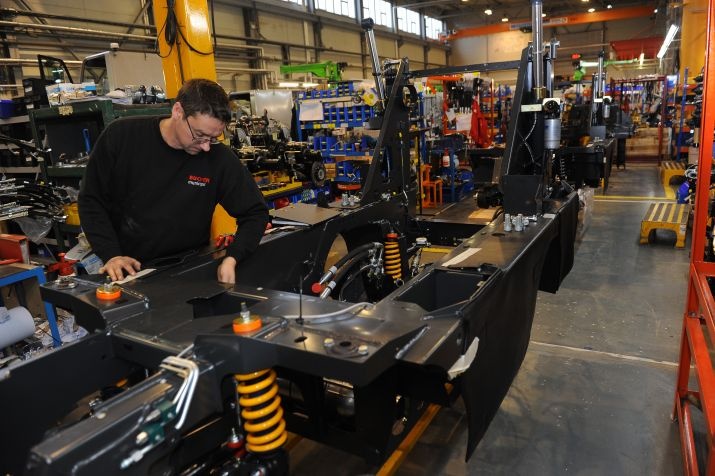
One of the first stations of the production line. Armands Zemrūķis prepares a chassis to assemble the cooling system.
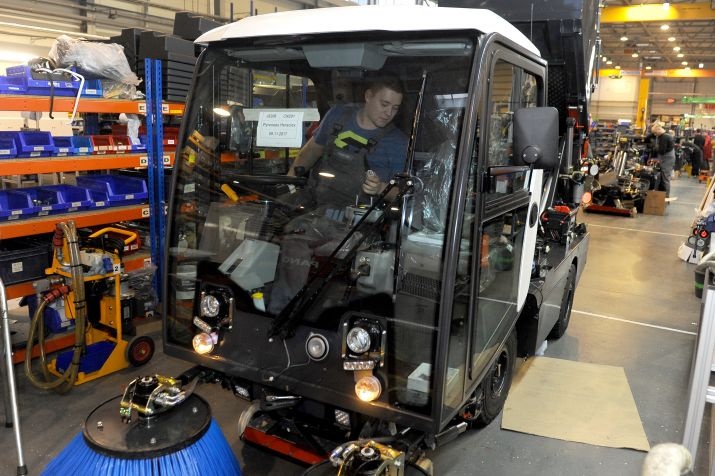
Sendijs Radovics checks the electronics of the almost-ready machine.
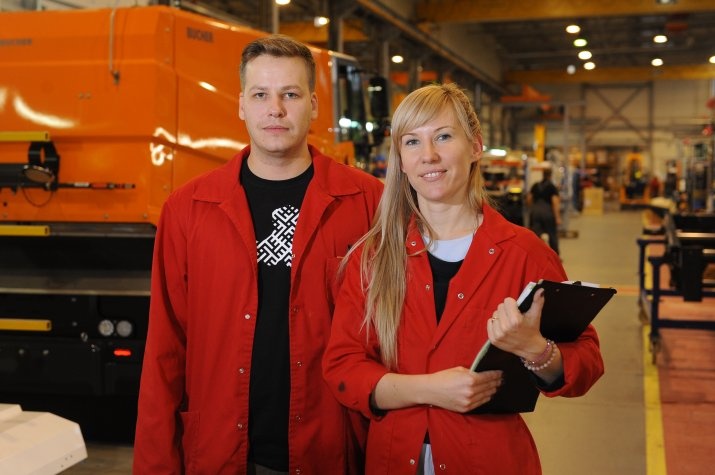
Production process engineer Artis Segliņš and head of Assembly and Painting Departments Dace Graudiņa supervise the processes at the new production line.
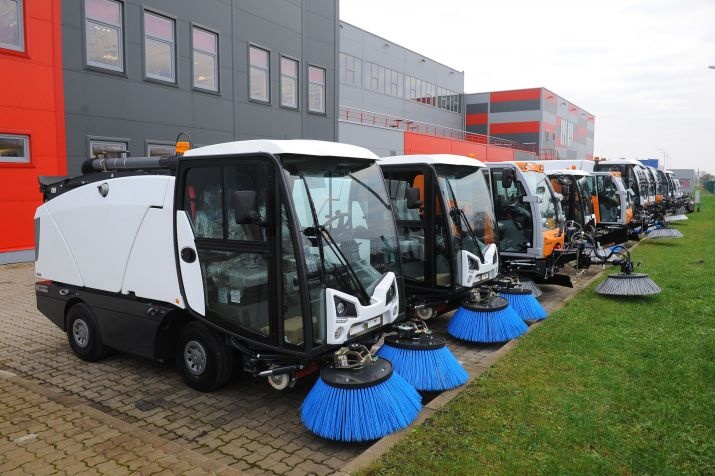
Municipal machines C201 are one of the latest and most modern models of Bucher Industries.
